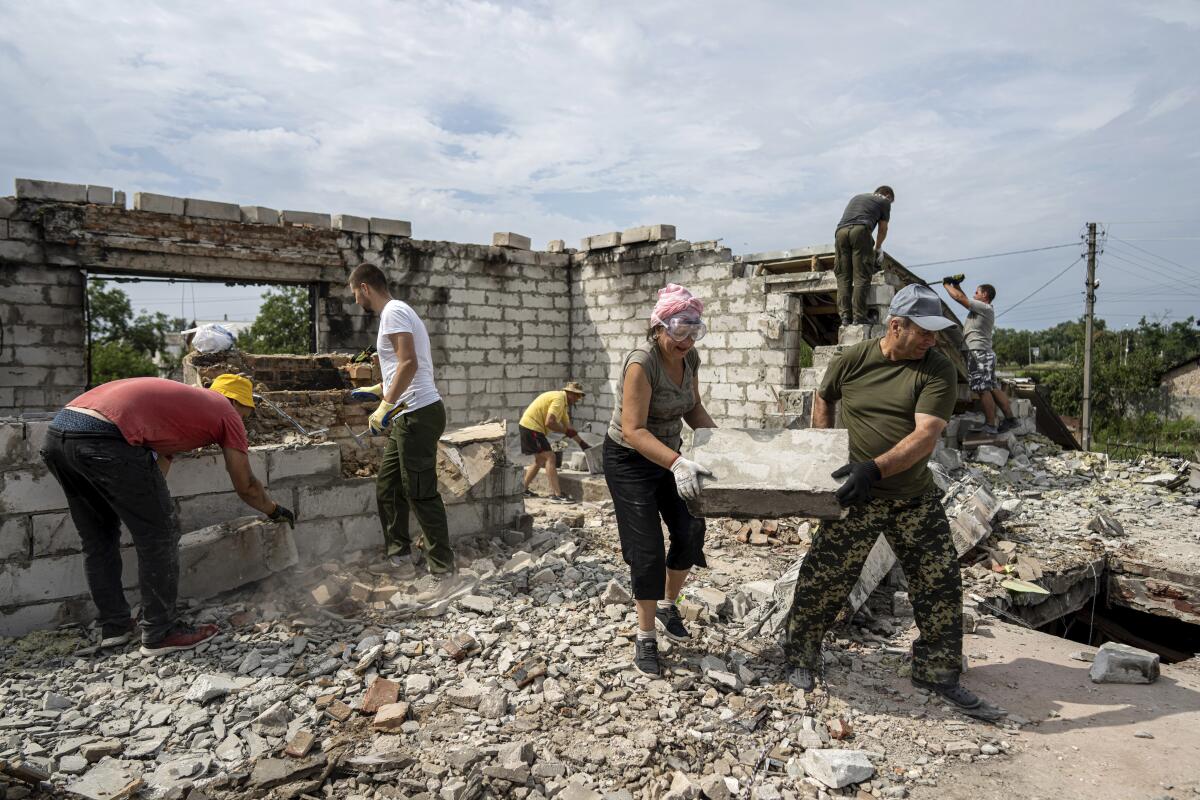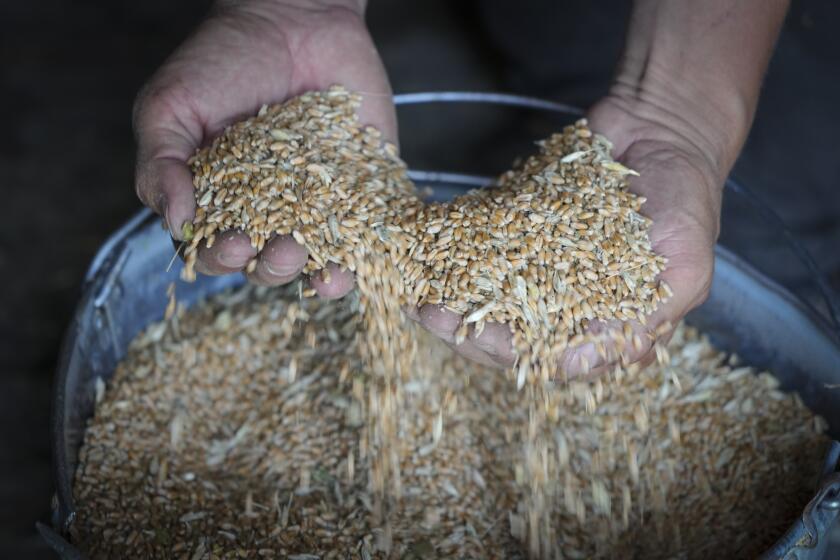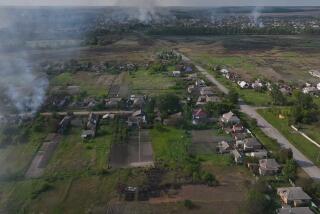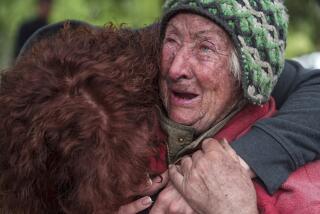Ukrainians counting on neighbors’ help as they try to rebuild homes

- Share via
NOVOSELIVKA, Ukraine — As battles raged around Kyiv, one Russian advance was stopped in front of Maria Metla’s home. Artillery gutted most of the house, while the rest was pulverized by tank fire.
Metla, 66, is now counting on her neighbors to have somewhere to live this winter.
Crews of volunteers turn up on most mornings to prize away anything that can be reused ‒ setting up neat piles of bricks, destroyed kitchen appliances for scrap metal, and chunks of insulation panels.
The salvaged material is reused to help rebuild homes destroyed along the perimeter of Russia’s failed attempt during the initial stages of the war to surround and capture Ukraine’s capital.
The village of Novoselivka, nearly 90 miles north of Kyiv, was a scene of intense fighting during the 36-day attack on the capital. Metal doors are buckled by bullet holes from heavy machine-gun fire and houses like Metla’s were smashed by ground and aerial bombardment.
“We dragged what we could to the basement. Five bombs — one, two, three, four, five — exploded in the field behind us,” Metla said while standing in what used to be the living room of her destroyed home. She keeps a burned exercise bike and a religious icon of St. Nicholas as reminders of life before the war.
McDonald’s will begin reopening some of its restaurants in Ukraine in the coming months
Ukraine’s authorities said last month that the country had suffered more than $100 billion ‒ equivalent to two-thirds of its 2020 gross domestic product ‒ in infrastructure damage alone but estimate that the reconstruction effort could cost more than seven times that amount.
Officials are appealing to Western countries to tap frozen Russian assets on top of what they are willing to donate to help pay for the bill.
Container homes from Poland are being set up near Novoselivka, a village filled with orchards, sunflower patches and back gardens with chickens, outside the historic northern city of Chernihiv. But the scale of the damage has prompted scores of local initiatives.
“In many other countries, if your home is destroyed, you might put up a ‘For Sale’ sign and move to another town. It’s not like that here,” said Andriy Galyuga, a local volunteer organizer. “People are very attached to where they are from and they don’t want to leave.”
Galyuga’s organization, Bomozhemo, is in contact with similar initiatives that have sprung up all around the Ukrainian capital.
Russia’s invasion of Ukraine has upended the operations of what was the world’s fourth-largest grain exporter, with global consequences.
At one smashed home, Galyuga bounds up a broken stairwell to direct a 25-member crew of volunteers loading salvaged cinder blocks onto a slide and determinedly prying off construction material with pickaxes and crowbars.
Children and retired women help the effort watched by the worried homeowner, Zhanna Dynaeva, who makes food for the workers, many of whom have also lost their homes.
The gaunt-looking Dynaeva is staying with a friend, but visits her home daily to maintain an immaculate garden. She carries trays of drinks and sandwiches on the day the volunteers came to visit.
“I am so grateful to them. People around me have helped so much,” she said. As she gives an account of her escape from the bombardment, Dynaeva bursts into tears and is hugged by her homeless neighbor, Metla.
“I’m hoping I can stay on my property, maybe in a makeshift home to start,” Dynaeva says. “I don’t know what will happen to us. Winter will be here soon. I just worry all the time.”
More to Read
Sign up for Essential California
The most important California stories and recommendations in your inbox every morning.
You may occasionally receive promotional content from the Los Angeles Times.











